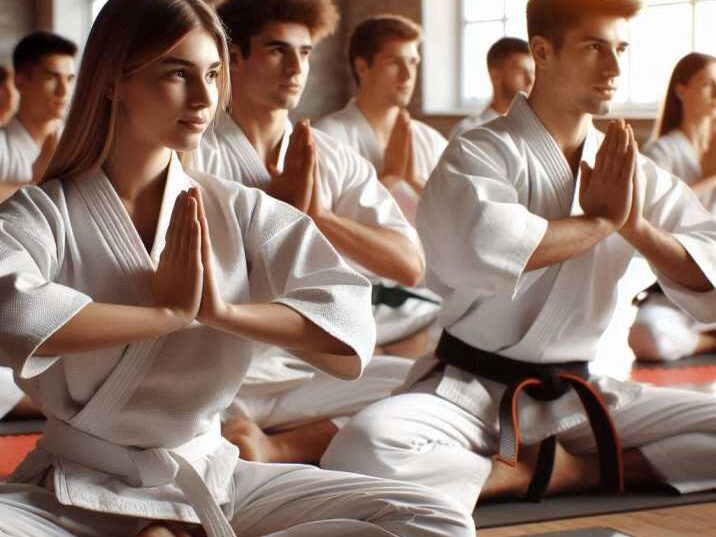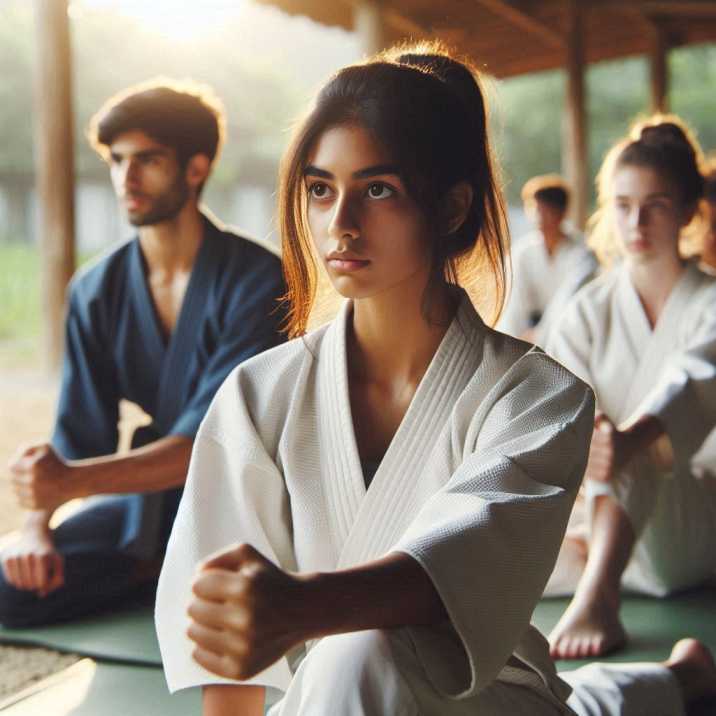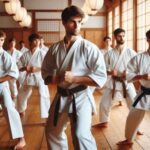Introduction
Table of Contents
Teaching martial arts is a fantastic way to help kids build physical strength, mental focus, and discipline, skills that can improve their performance in school and other areas of life. However, teaching martial arts effectively requires an understanding of key teaching techniques, student engagement, and discipline-building strategies. In this guide, we’ll explore how to teach martial arts. with simple steps and strategies to make learning enjoyable, safe, and rewarding.

Why Teach Martial Arts?
Teaching martial arts has unique benefits for both students and instructors. Kids gain improved coordination, strength, focus, and self-confidence, while instructors find purpose in helping students grow. Martial arts training isn’t just about physical fitness; it promotes concentration, discipline, and perseverance, which can positively influence other areas of a child’s life.
Key Steps to Teaching Martial Arts
1. Create a Safe and Inclusive Environment
Ensuring a safe and respectful environment is essential when teaching martial arts, particularly for beginners and younger students. Start by establishing ground rules for behaviour, cooperation, and safety, emphasizing the importance of respect among classmates. Use protective gear like gloves and mouthguards to minimize injury, and keep the training area clear of obstacles. Teaching proper warm-up routines is also vital, as it prepares the body for physical activity and prevents injuries. Additionally, encourage students to bow at the beginning and end of each class to reinforce respect and establish martial arts as a discipline intended only for training and self-defence.
2. Teach Basic Techniques First
Building a strong foundation in basic moves is the cornerstone of successful martial arts instruction. Focus initially on essential techniques such as punches, which teach students to form a proper fist and arm position; kicks, which help them balance and control their movements; and blocks, which are crucial for effective self-defence. By concentrating on these fundamental moves, students can build the skills and confidence needed to progress. Repetition is key, as practising these moves regularly solidifies technique and boosts self-assurance.
3. Incorporate Discipline and Focus-Building Exercises
Martial arts training is a powerful tool for mental as well as physical growth, particularly in enhancing focus and self-discipline. Include meditation sessions before or after training to promote calmness and mental clarity. Breathing exercises are also helpful, encouraging students to focus on each breath and develop greater concentration. Discipline is developed through consistent practice and goal-setting; reward improvement and encourage students to work toward personal goals with patience and perseverance, reinforcing the importance of mental strength in martial arts.
4. Make Learning Fun and Engaging
Keeping students interested and motivated is crucial for long-term martial arts training success. Incorporate fun, interactive drills like partner exercises, where students practice techniques together, and martial arts games like relay races or obstacle courses that build agility and reflexes. Reinforcing positive behaviour with praise and recognition is another essential component. Acknowledging students’ efforts helps build their confidence and encourages them to remain committed to their training, making the learning experience enjoyable and rewarding.
5. Encourage Teamwork and Respect for Others
Martial arts fosters a sense of community, teaching students the value of teamwork and mutual respect. Encourage group activities like safe, controlled sparring, which allows students to practice responding to others while wearing proper safety gear. Class discussions can also be valuable, giving students a chance to talk about what they’ve learned regarding respect, cooperation, and discipline. These activities build camaraderie and emphasize that martial arts is a collaborative, respectful pursuit.
6. Set Goals and Track Progress
Setting goals and tracking progress are important motivators for martial arts students, helping them see their improvement over time. Work with each student to create short-term goals, such as perfecting a certain number of kicks, and long-term goals, like advancing to a higher belt. Use charts or journals for each student to document their growth in focus, technique, and discipline. Tracking progress visually helps them stay engaged and feel a sense of accomplishment as they advance in their training.
7. Introduce Advanced Techniques Gradually
Gradually introduce more complex techniques to keep students engaged and challenged as they gain proficiency. Teach combos by combining punches and kicks in fluid sequences, which help students build coordination and rhythm. Sparring techniques can also be introduced, focusing on safety and control. Increasing the difficulty level over time encourages students to push their limits, helping them develop confidence and technical skills as they advance.

Table of Information about how to teach martial arts
| Technique | Description | Benefits |
|---|---|---|
| Punch | Striking with a closed fist | Builds strength, focus |
| Kick | Striking with the legs | Improves balance, power |
| Block | Defending against strikes | Enhances coordination |
| Meditation | Quiet, focused breathing | Boosts concentration |
| Sparring | Practicing moves with a partner | Builds confidence |
Conclusion
Teaching martial arts to kids is a rewarding experience that can have a lifelong impact. By creating a safe, engaging environment focused on discipline, focus, and respect, instructors can help students grow physically and mentally. With clear goals, teamwork, and gradual progression, martial arts becomes a valuable journey of self-improvement for young students.
FAQs
1. Can martial arts improve focus in school?
Yes, martial arts training promotes focus and discipline, which can benefit students in school.
2. What’s the best age to start learning martial arts?
Children can start martial arts as young as four or five, but the ideal age depends on each child’s maturity and interest.
3. How long does it take to master basic martial arts skills?
With regular practice, basic skills can be learned in 3-6 months. Mastery takes longer, often years.
4. Is martial arts safe for kids?
Yes, when taught in a controlled environment with safety gear and proper supervision.
5. Do students need to be strong to learn martial arts?
No, martial arts can help students build strength, regardless of their starting fitness level.


